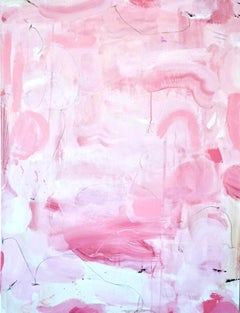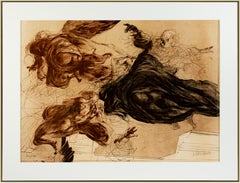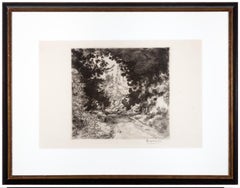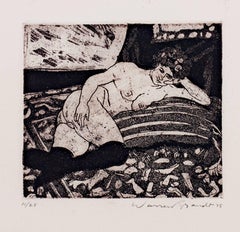Wisconsin - Art
2010s Abstract Expressionist Wisconsin - Art
Canvas, Acrylic
1970s Contemporary Wisconsin - Art
Lithograph
1870s Impressionist Wisconsin - Art
Etching, Aquatint
1970s Modern Wisconsin - Art
Etching
2010s Abstract Geometric Wisconsin - Art
Wood, Paint
Early 2000s Contemporary Wisconsin - Art
Stone
1970s Surrealist Wisconsin - Art
Lithograph
Early 2000s Contemporary Wisconsin - Art
Stone
1880s Hudson River School Wisconsin - Art
Parchment Paper, Etching
Mid-20th Century Modern Wisconsin - Art
Lithograph
Early 2000s Abstract Wisconsin - Art
Steel
Early 2000s Outsider Art Wisconsin - Art
Wood, Oil
1970s Contemporary Wisconsin - Art
Lithograph
Early 2000s Contemporary Wisconsin - Art
Stone
1990s Wisconsin - Art
Woodcut
1980s Pop Art Wisconsin - Art
Ink, Lithograph
1890s Art Nouveau Wisconsin - Art
Lithograph
Early 20th Century Abstract Wisconsin - Art
Oil, Wood Panel
1910s Blue Rider Wisconsin - Art
Woodcut, Laid Paper
2010s Contemporary Wisconsin - Art
Paper, Giclée
Early 2000s Contemporary Wisconsin - Art
Canvas, Acrylic
19th Century Wisconsin - Art
Wood
1990s Contemporary Wisconsin - Art
Pastel
1940s Wisconsin - Art
Wood
Early 2000s Contemporary Wisconsin - Art
Watercolor
19th Century Folk Art Wisconsin - Art
Animal Skin, Leather
1950s Photorealist Wisconsin - Art
Luster, Archival Ink, Digital
1950s Modern Wisconsin - Art
Aquatint
Late 19th Century Barbizon School Wisconsin - Art
Etching
21st Century and Contemporary Contemporary Wisconsin - Art
Acrylic, Canvas
1990s Surrealist Wisconsin - Art
Canvas, Oil
Early 2000s Contemporary Wisconsin - Art
Stone
2010s Contemporary Wisconsin - Art
Canvas, Oil
2010s Contemporary Wisconsin - Art
Metal
Early 2000s Color-Field Wisconsin - Art
Canvas, Oil
1960s Expressionist Wisconsin - Art
Lithograph
Early 2000s Contemporary Wisconsin - Art
Oil Pastel, Found Objects
Early 2000s Contemporary Wisconsin - Art
Oil Pastel, Found Objects
1990s Contemporary Wisconsin - Art
Oil Pastel, Found Objects
1990s Contemporary Wisconsin - Art
Oil Pastel, Found Objects, Acrylic
1990s Contemporary Wisconsin - Art
Oil Pastel, Found Objects
1990s Contemporary Wisconsin - Art
Oil Pastel, Found Objects
Early 2000s Expressionist Wisconsin - Art
Paper, Watercolor
Early 2000s Wisconsin - Art
Canvas, Acrylic
1960s Wisconsin - Art
Mixed Media, Oil
1960s Wisconsin - Art
Watercolor
1910s Folk Art Wisconsin - Art
Wood
Early 2000s Wisconsin - Art
Stone
1990s Contemporary Wisconsin - Art
Ink, Watercolor
21st Century and Contemporary Contemporary Wisconsin - Art
Enamel, Steel, Gold Leaf
2010s Photorealist Wisconsin - Art
Linen, Oil
Mid-17th Century Old Masters Wisconsin - Art
Etching
Early 2000s Contemporary Wisconsin - Art
Mixed Media
Early 20th Century Folk Art Wisconsin - Art
Textile, Wood
2010s Abstract Expressionist Wisconsin - Art
Watercolor, Archival Paper, Charcoal, Mixed Media
Early 20th Century Folk Art Wisconsin - Art
Textile, Wood
1860s Modern Wisconsin - Art
Etching
2010s Contemporary Wisconsin - Art
Birch, Ink, Watercolor
2010s Abstract Geometric Wisconsin - Art
Wood, Paint
2010s Abstract Geometric Wisconsin - Art
Wood, Paint





